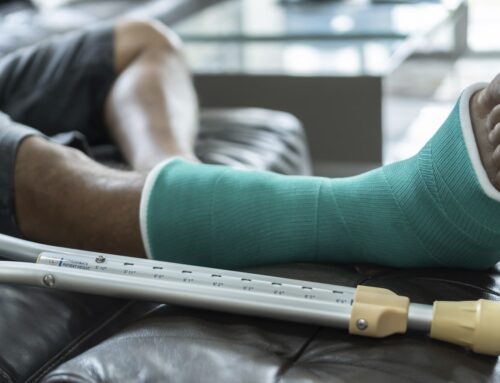As the temperature drops, you may experience increased joint pain. This is not a coincidence, as colder weather can cause discomfort in your joints. If you are curious about the connection, keep reading to learn more about winter joint pain and how to manage it.
Reasons for winter joint pain
In general, cold weather can cause the blood vessels to narrow, which can reduce blood flow to the extremities. This diminished circulation can deprive the joints of essential nutrients and oxygen, resulting in painful or stiff joints.
Winter can be especially challenging for those living with arthritis pain. Cooler temperatures do not cause joint disorders or other orthopaedic conditions but can worsen the symptoms. Many arthritis sufferers have increased joint pain and stiffness during the winter.
Let’s take a closer look at other reasons why colder weather can cause aches and pains in your joints:
Drop in air pressure
One of the primary culprits behind winter joint pain is the fluctuation in the barometric pressure. When the pressure falls, it can cause changes in the synovial fluid in the joints. Lower air pressure can also make the tissues around the joints swell and stiffen.
Some people say they can predict bad weather because they begin to feel pain in their joints. The change in air pressure from a storm or lowering temperatures can cause joints to ache.
Less activity
Many people prefer to stay indoors during the winter instead of keeping up with regular exercise or sports. Reduced physical activity can lead to muscle weakness and stiffness, which contributes to joint discomfort. Regular exercise is crucial for maintaining joint health because it strengthens the muscles surrounding the joints and improves flexibility.
Not enough vitamin D
The winter months also coincide with a potential drop in vitamin D levels. Sunlight is a primary source of vitamin D. During the winter, people may spend less time outdoors this time of year. A vitamin D deficiency can contribute to joint pain or worsen existing joint conditions.
Not staying hydrated
Cold weather can lead to a reduced sensation of thirst, causing individuals to consume less water. However, dehydration can negatively impact joint health by reducing the lubrication within the joints. Proper hydration helps maintain the viscosity of the joint fluid, which acts as a lubricant and shock absorber.
Improve winter joint health
You can protect your joints during the winter so that the colder temperatures are more manageable. Here are a few steps to minimize winter-related discomfort.
- Dress properly for the weather with layers of clothing to stay warm, including a hat and gloves when you go outside.
- Do not let the cold weather deter you from staying active. Consider indoor exercises like yoga or swimming, which are gentle on the joints. Regular activity can help maintain joint flexibility and strengthen the surrounding muscles.
- Eating a healthy diet of anti-inflammatory foods like fruits, vegetables and fatty fish can help manage arthritis symptoms. Omega-3 fatty acids in fish like salmon can reduce inflammation and promote joint health. Supplementing with vitamin D or eating vitamin D-rich foods may help alleviate discomfort associated with winter joint pain.
- Proper hydration is essential for joint health. Even if you do not feel thirsty, aim to drink four to six cups of water throughout the day to prevent aching joints.
- Stress can exacerbate joint pain. Practice stress-reduction techniques like meditation, deep breathing exercises or yoga to help manage joint pain during the winter.
- Use a heating pad or take a warm bath to alleviate joint pain.
Winter joint pain specialists in the Triangle
At Cary Orthopaedic, we are here to help you navigate the challenges of joint pain, regardless of the season. If you are experiencing new pain or want a consultation on a current condition, we are here to help. Call us today to make an appointment at one of our Triangle locations.






